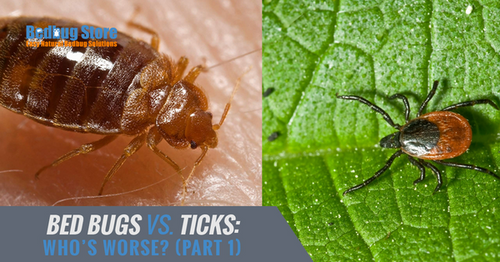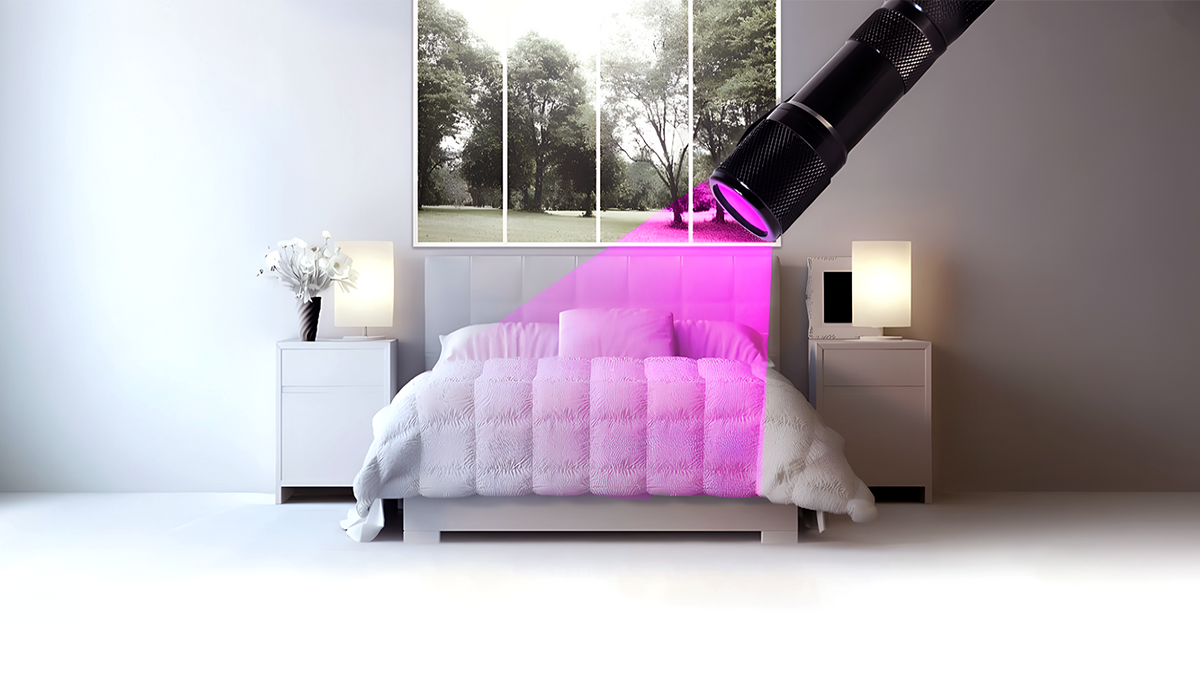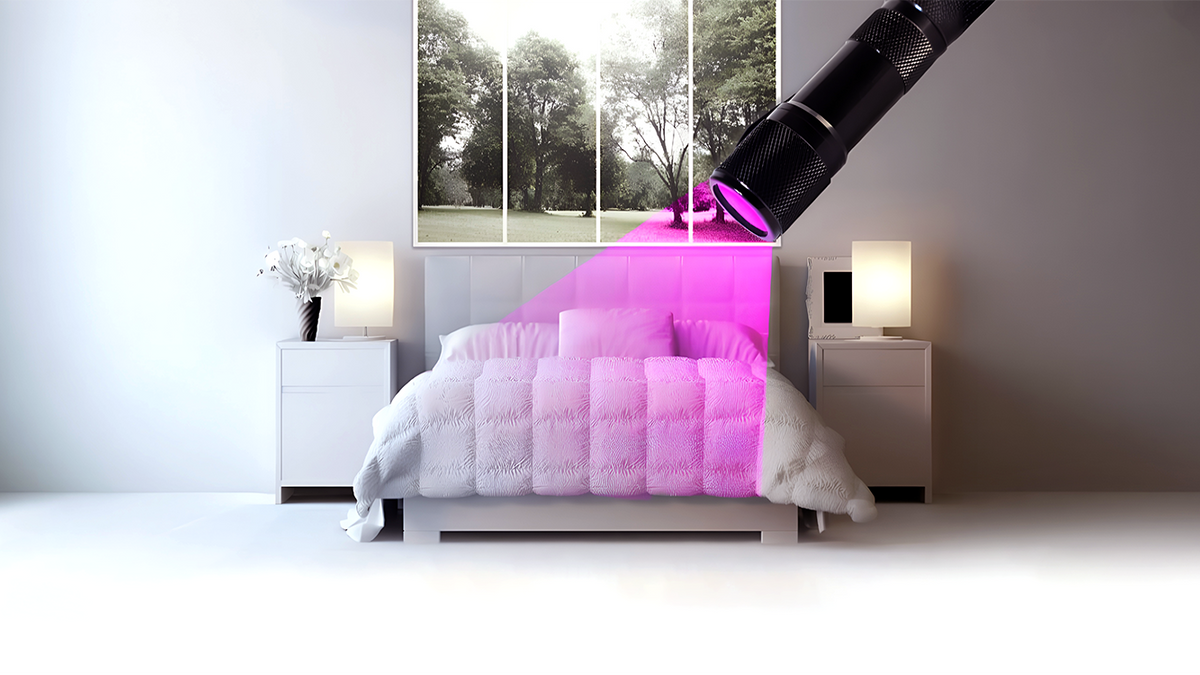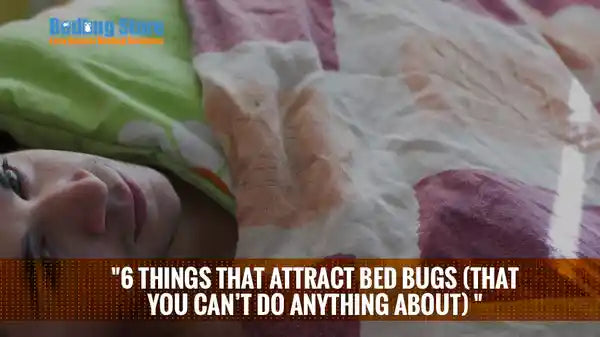Bed Bugs vs. Ticks: Who’s Worse? (Part 1)
Published on July 03, 2018 by Alana Korol

Then there’s the vampire bat, the largest animal on the planet that subsists entirely on blood. We’re happy he doesn’t hide in our carpets.
But even though we detailed several parasites on that list, there was one that we thought we’d save back and write an entire article (or two) about the tick. Both bed bugs and ticks are ectoparasites, meaning they feed on the outside of their host. Also, they are both flat-bodied creatures, meaning that they can hide in places that many other insects can’t.
But there are some critical differences between ticks and bed bugs that we thought we’d go over because, even though they have vital similarities, they’ll go about their disgusting business in their own way.
How Many Legs?
It’s pretty easy to tell the difference between ticks and bed bugs. Ticks have eight legs, putting them in the same class as spiders (even though spiders are excellent and ticks are lame). Bed bugs are insects, meaning they are in the same class as ladybugs (even though they are super cool and bed bugs are super lame).
But here’s where it gets tricky. Ticks hatch with only six legs, meaning it’s straightforward to mistake a larval tick for a bed bug. Only after a tick has its first blood meal will it grow legs seven and eight.
Who’s Bigger?
It all depends on the species. While there are 90 species in the bed bug family, the ones we handle with our bed bug-killing spray are about .18 inches long. Many people say that’s about the size of the apple seed, but the size changes with the apple species!
It’s the same with ticks; size depends on the species and how much blood it has consumed. One of the most common ticks you’ll pick up in grasslands in the United States is the deer tick, and adults tend to be about the same size as bed bugs adults. Dog ticks, another common type in America, are even more significant.
Where Do They Live?
Ticks live throughout the world, but they’re more likely to live in humid areas. That’s because ticks need a certain amount of humidity to keep their bodies hydrated. Ticks tend to live in the woods or in grasslands where prey passes by. Some ticks search for their prey, especially if they are the type that lives and breeds with its host (such as a bat cave. Bruce Wayne, beware.)
Bed bugs live almost exclusively indoors because humans are their preferred (and usually exclusive) hosts. Our homes have been built with plush carpets and tiny crevices in which they can hide, and we essentially trap ourselves in there with them. We also give them a warm environment in which to live, so there’s no season in which they are less active. Once they’re in, you’ll almost always have them bothering you, unless you get an all-natural bed bug treatment like Bed Bug Patrol.
How Do You Get Them?
The most common way humans get ticks in America is via questing, where ticks grab onto grass or shrubbery with their four back legs while holding their four front legs out in the air, just waiting for something to brush past. Different species of questing ticks will alter their climbing height depending on the size of their preferred host: higher for deer and lower for mice.
Bed bugs infected at an infested hotel are most often brought into a home via luggage. Bed bugs can also come in on second-hand furniture or bedding.
How Do You Get Rid Of Them?
Here’s the good thing about ticks: you never hear about anyone having a tick infestation in their home. Finding one on you is very disconcerting, but at least you can see them fairly quickly. After a walk in the woods, check your clothing, jeans, and socks, and toss any ticks crawling on you. Once you get home, check again and flush any that haven’t yet latched on down the toilet. (Or burn them and hear that satisfying pop.) After your shower, have someone check your hair. If a tick has been attached to you, tweezers are the most common method for removing them. Take a look at these instructions from the Center for Disease Control.
Bed bugs are more challenging to get rid of. First, you’ll never see the bed bugs that bother you. If you see them, feel free to vacuum them up, but too often, they’re hiding in places you can’t see. That’s why it’s important to hit them from every angle with multiple bed bug treatment products, such as bed bug traps, sprays, powder, and steam.
How Do They Feed?
Ticks and bed bugs feed in much the same way. They slice into your skin, spit in some anticoagulants so that your blood doesn’t clot, and drink your blood out. Why do they do this? Because they’re horrible and they should all die, that’s why!
The big difference between ticks and bed bugs is in their time spent on you. Bed bugs instinctively know that humans can pick them off, so they tend to attack at night when humans sleep and don’t stick around on the skin for long. They’re usually done with feeding in 10 to 20 minutes. They’re more than willing to make the trip back and forth from the bed crevices every night if it means they can do so relatively undetected.
How long ticks feed depends on what type of tick it is. Some ticks are like bed bugs in that they might be done in under half an hour. Others might stay on for many days, engorging themselves on blood until they are multiple times their original size before they drop off and molt.
Goodness, they’re both pretty horrible so far, aren’t they? It will take more than one blog to tell you which of these bloodsuckers is genuinely the worst. If you have ticks, pull them off with tweezers. If you have bed bugs, it will take something more dedicated. Check out our bed bug eradication methods right here, then come back to read our follow-up article.
Our natural, plant-based Bed Bug Patrol Killer Spray provides an all-natural solution to infestations of bed bugs, as well as fleas, spiders, and other common indoor bugs. Our 100% natural solution is made in the USA. It relies on the power of natural ingredients like citric acid, clove oil, and peppermint oil to naturally deter these bugs from living in your furnishings and upholstery. Just spray our solution on affected surfaces twice per day, and it will get to work on exterminating your bed bugs and preventing their return. To keep you safe from bed bugs on your travels, arm yourself with our Bed Bug Blasting Travel Spray, which comes in a handy, TSA-approved travel-size bottle for your convenience.




